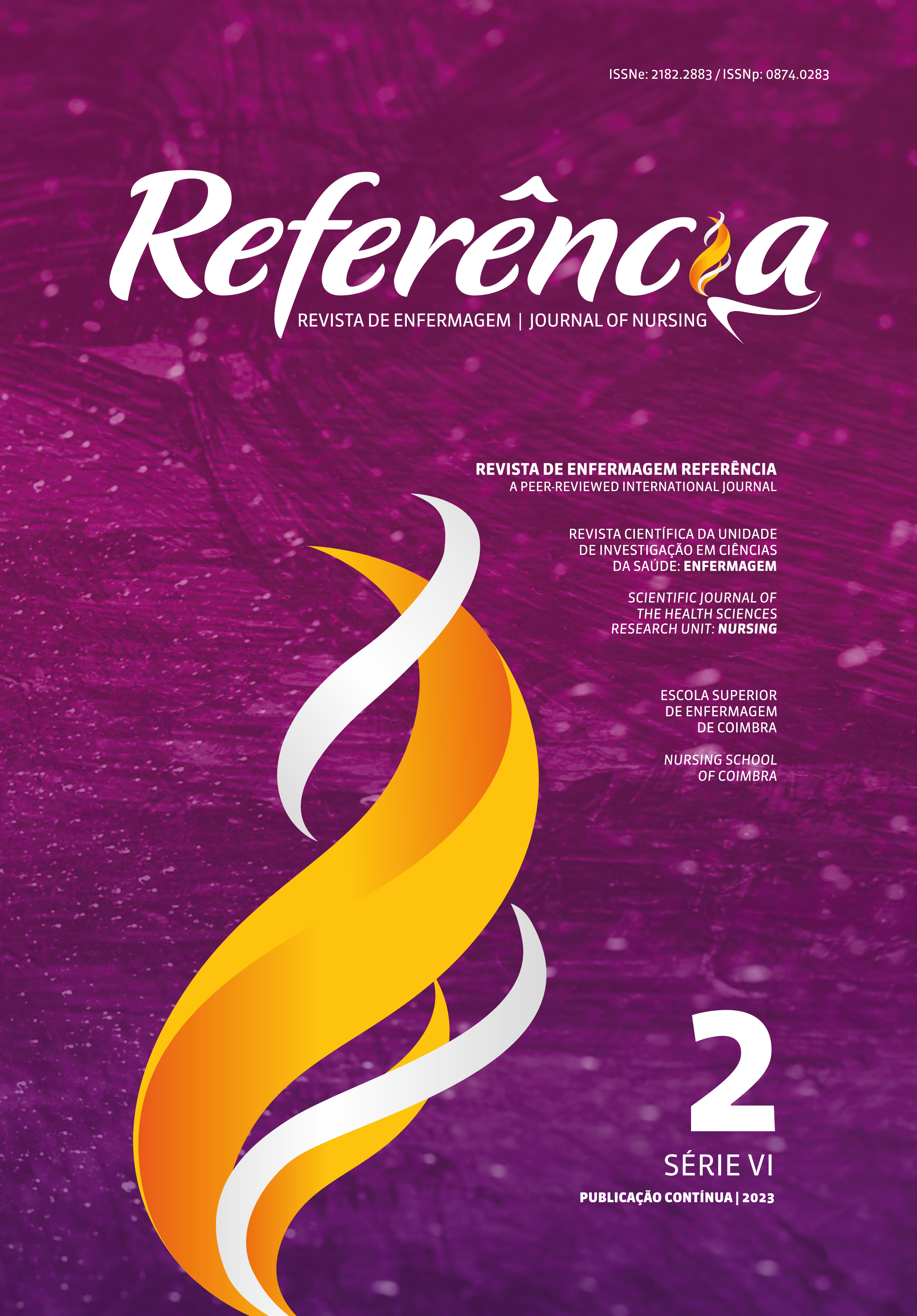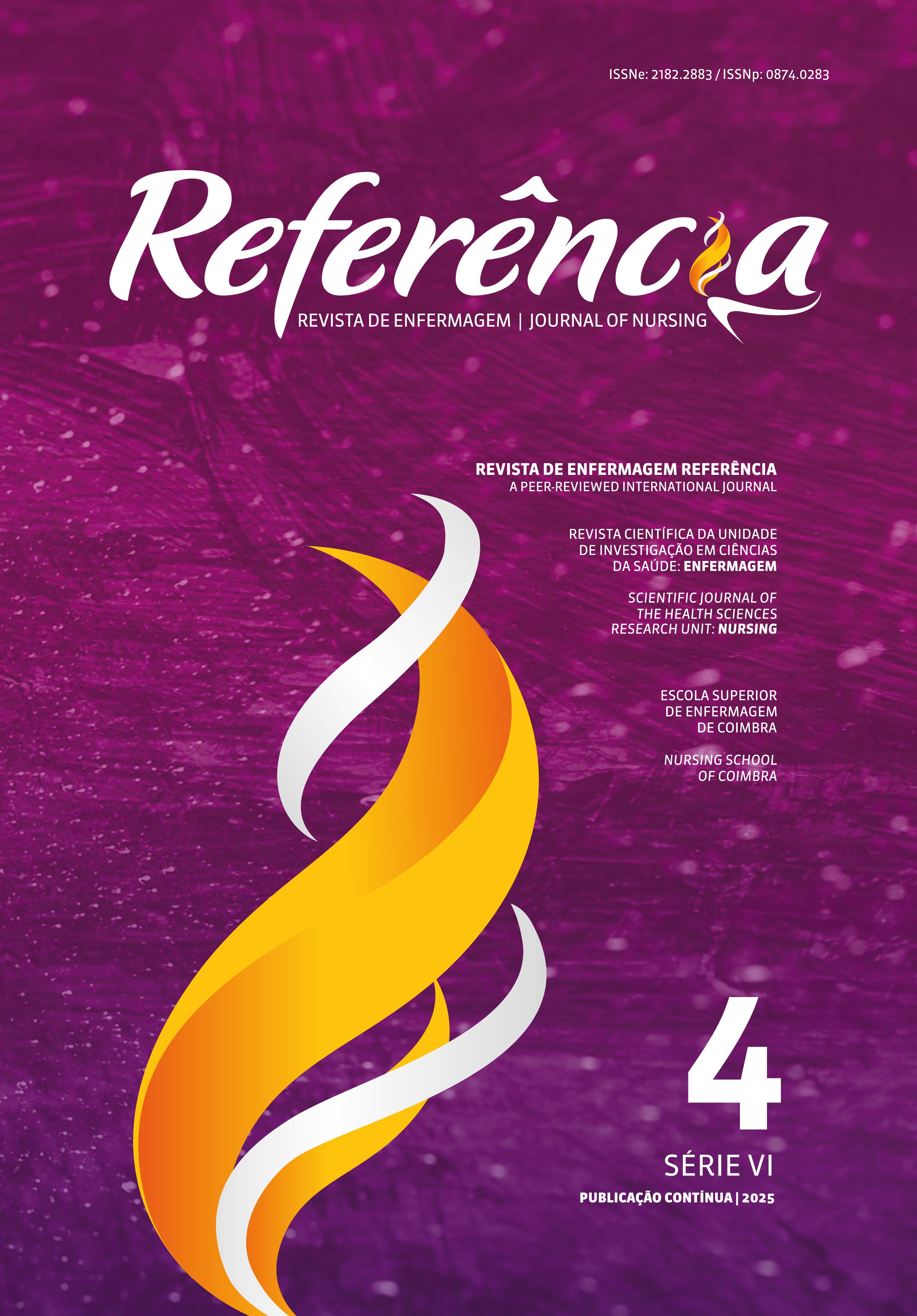Nurses’ conceptions of communication in shift handover meetings
DOI:
https://doi.org/10.12707/RVI22110Keywords:
communication, information management, shift work schedule, patient handover, nursesAbstract
Background: Nurses’ communication in shift handover meetings is described as a process of information sharing/relationship and patient handover using verbal and non-verbal language. It is considered vital for the quality of care.
Objective: To examine nurses’ conceptions of communication in shift handover meetings. Methodology: This qualitative descriptive study uses interviews and content analysis with a convenience sample of 32 nurses from different health services, units, and departments. The participants were selected from a higher education institution, where they were attending Postgraduate and Master’s degrees in Nursing.
Results: Nurses point out more barriers to communication in shift handover meetings (such as frequent interruptions and professionals’ lack of interest and hurry to leave) than elements of effectiveness (the transmission of all intended information). They consider that effective communication should be objective, brief, complete, and systematic and allow receiving versus transmitting relevant information at the beginning and end of the shift.
Conclusion: Nurses believe that communication in shift handover meetings must be improved, high lighting in-service training on this theme as a measure to be adopted, among others.
Downloads
References
Antunes, M. M. (2019). Perceção dos enfermeiros acerca da passagem de turno [Dissertação de mestrado, Escola Superior de Enfermagem de Coimbra]. Repositório Científico da Escola Superior de Enfermagem de Coimbra. http://web.esenfc.pt/?url=c3fn9epR
Brás, C., & Ferreira, M. (2016). A comunicação e qualidade de cuidados em enfermagem: Revisão de literatura. Servir, 59(4), 12–16. https://doi.org/10.48492/servir024.24024
Carlos, M. M. (2019). Handover e segurança do doente [Dissertação de mestrado, Faculdade de Economia, Universidade de Coimbra]. Estudo Geral: Repositório Científico da Universidade de Coimbra. http://hdl.handle.net/10316/89787
Chiew, L., Bakar, S. B., Ramakrishnan, S., Cheng, P. L., Karunagaran, Y., & Bunyaman, Z. B. (2019). Nurse’s perception and compliance on Identification, Situation, Background, Assessment and Recommendation (ISBAR) tools for handoff communication in tertiary hospital, Dammam. Malaysian Journal of Medical Research, 3(4), 26-32. https://doi.org/10.31674/mjmr.2019.v03i04.004
Direção-Geral da Saúde. (2017). Comunicação eficaz na transição de cuidados de saúde (Norma nº 001/2017 de 8 de Fevereiro). https://normas.dgs.min-saude.pt/2017/02/08/comunicacao-eficaz-na-transicao-de-cuidados-de-saude/
Eggins, S., & Slade, D. (2015). Communication in clinical handover: Improving the safety and quality of the patient experience [Editorial]. Journal of Public Health Research, 4(3), 197-199. https://doi.org/10.4081/jphr.2015.666
Ferreira, M., Sequeira, A., Molina, D., Boiças, R., & Wees, S. (2020). Utilização de comunicação estandardizada na transição de cuidados do doente. Revista Eletrônica Nurses, 1(1), 42-56.
Johnson, M., & Cowin, L. S. (2013). Nurses discuss bedside handover and using written handover sheets. Journal of Nursing Management, 21(1), 121–129. https://doi.org/10.1111/j.1365-2834.2012.01438.x
Ordem dos Enfermeiros, Conselho de Enfermagem. (2017). Parecer n.º 61/2017: Atribuição de tempo para a passagem de turno. https://www.ordemenfermeiros.pt/arquivo/documentos/Documents/CE_Parecer_61_AtribuicaoTempoPassagemTurno.pdf
Prieto, G. B. (2014). Comunicação eficaz: Teoria e prática da comunicação humana. Escolar Editora.
Rocha, M., Sousa, P., & Martins, M. (2016). A opinião dos enfermeiros diretores sobre a intervenção do enfermeiro chefe. Investigación en Enfermería: Imagen y Desarrollo, 18(2), 89–105. https://doi.org/10.11144/Javeriana.ie18-2.aoed
Rodrigues, A., Azevedo, C., & Calvo, V. (2016). Internal communication in organizations: Practical instruments to help the shift change. Millenium: Journal of Education, Technologies, and Health, 2(1), 105–114. https://doi.org/10.29352/mill0201.09.00004
Santos, G. R., Barros, F. M., & Silva, R. C. (2020). Comunicação no handover na terapia intensiva: Sentidos e práticas da equipe de enfermagem. Revista Gaúcha de Enfermagem, 41, e20180436. https://doi.org/10.1590/1983-1447.2020.20180436
Santos, G. R., Barros, F. M., Broca, P. V., & Silva, R. C. (2019). Ruídos na comunicação durante o handover da equipe de enfermagem da unidade de terapia intensiva. Texto & Contexto - Enfermagem, 28, e20180014. http://dx.doi.org/10.1590/1980-265x-tce-2018-0014
Santos, M. C., Grilo, A. M., Andrade, G., Guimarães, T. & Gomes, A. (2010). Comunicação em saúde e a segurança do doente: Problemas e desafios. Revista Portuguesa de Saúde Pública, Vol. Temático(10), 47–57. http://hdl.handle.net/10400.21/3120
Sequeira, C. (2016). Comunicação clínica e relação de ajuda. Lidel.
Silva, M. F., Anders, J. C., Rocha, P. K., Souza A. I., & Burciaga, V. B. (2016). Comunicação na passagem de plantão de enfermagem: Segurança do paciente pediátrico. Texto & Contexto - Enfermagem, 25(3), e3600015. http://dx.doi.org/10.1590/0104-07072016003600015
Sousa, J., Meneses, D., Alves, D., Machado, L., Príncipe, F., & Mota, L. (2019). Teor da informação partilhada entre enfermeiros durante a passagem de turno no serviço de urgência. Revista de Enfermagem Referência, 4(21), 151–158. https://doi.org/10.12707/RIV19014
The Joint Commission. (2017). Inadequate hand-off communication. Sentinel Alert Event, 58, 1-6. https://www.jointcommission.org/-/media/tjc/documents/resources/patient-safety-topics/sentinel-event/sea_58_hand_off_comms_9_6_17_final_(1).pd






















